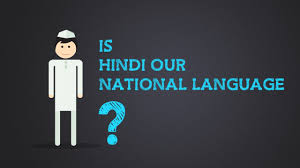The most recent rousing has come from a draft national education policy by the Narendra Modi government-II. In that particular draft policy, the government has offered obligatory teaching of Hindi together with English and the concerned regional language in non-Hindi speaking states. The government afterward revised its draft policy in order to make it non-mandatory.
HIGHLIGHTS
- New education policy sparks off anti-Hindi imposition protests
- Modi government revises draft education policy in the view of protests
- Original version of draft policy proposed to make Hindi mandatory for class 6 and above
On the other hand, this has regenerated the debate about Hindi being or not being the national language. The draft policy’s drive for Hindi seems to be grounded on the basis that 54 per cent of Indians speak Hindi language. But as per to the Census 2011, the figures had come up with different figure.
Total number of 52 crore out of 121 crore people identified Hindi as their language, according to the 2001 Census. And on the other hand, around 32 crore people announced Hindi as their mother tongue.
This means that Hindi is the language of less than 44 per cent Indians as well as mother tongue of merely little over 25 per cent people in India.
But there has been bigger push for turning out Hindi to be a pan-India language. Weeks before he was elected as the Vice-President, Venkaiah Naidu announced Hindi as the national language and criticized that people concentrated more on English.
Venkaiah Naidu in June 2017 said, “Hindi is our national language and it is impossible for India to progress without Hindi. It is unfortunate that everyone is after English medium I want the nation to discuss, promote and learn our mother languages more and at the same time learn Hindi as well.”
This debate is not recent but has been raging since Independence. The Constituent Assembly saw heated arguments over the use and scope of Hindi with one member, RV Dhulekar, announcing that those who did not know Hindustani (as Hindi was known back then) “had no right to stay in India”.
The Sub-Committee on Fundamental Rights of the Constituent Assembly suggested that “Hindustani, written either in Devanagari or the Persian script at the option of the citizen, shall, as the national language, be the first official language of the Union. English shall be the second official language for such period as the Union may, by law, determine.”
The Constitution, on the other hand, did not announce Hindi as the national language; it rather conferred Hindi as the status of official language along with English. Article 343 of the Constitution recommends Hindi as written in Devanagari script as the official language of the government along with English.
In the year 2010, the Gujarat High Court had discharged a PIL looking for track for mandatory printing of details such as price, ingredients and date of manufacturing of goods in Hindi on the ground that it was the national language.
The court had also stated, “Normally, in India, a majority of the people have accepted Hindi as a national language and many people speak Hindi and write in Devanagari script but there is nothing on record to suggest that any provision has been made or order issued declaring Hindi as a national language of the country.”
The response from the ministers in the Narendra Modi government point towards no change in stand on the status of Hindi. “The National Education Policy as submitted to the Minister HRD [human resource development] is only a draft report. Feedback shall be obtained from general public. State governments will be consulted. Only after this the draft report will be finalized,” S Jaishankara tweeted, who is the newly elected external affairs minister.

Leave a Reply